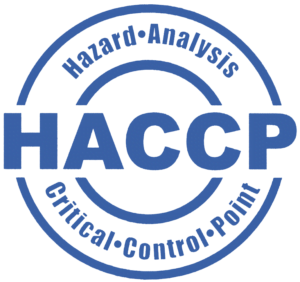Introduction:
In the ever-evolving landscape of the food industry, ensuring the safety of products is paramount. Hazard Analysis and Critical Control Points (HACCP) certification stands as a gold standard, providing a systematic approach to identifying and managing potential hazards throughout the food production process. This article explores the significance of HACCP certification, its benefits, and the steps involved in obtaining this crucial accreditation.
Understanding HACCP:
HACCP is a preventive, science-based system designed to identify, evaluate, and control hazards related to food safety. Developed by NASA in the 1960s, it was later embraced by the food industry to enhance the safety of the products we consume. HACCP places emphasis on identifying critical control points in the production process, ensuring that potential hazards are managed and minimized.
Benefits of HACCP Certification:
-
Enhanced Consumer Confidence: HACCP certification demonstrates a commitment to food safety, instilling confidence in consumers and stakeholders. It is a testament to a company's dedication to producing safe and high-quality food products.
-
Compliance with Regulatory Requirements: Many countries and international organizations require HACCP certification as a prerequisite for market access. Achieving HACCP compliance ensures alignment with global food safety standards and regulatory requirements.
-
Risk Reduction: By systematically identifying and controlling potential hazards, HACCP reduces the risk of contamination, foodborne illnesses, and product recalls. This proactive approach safeguards both consumers and the reputation of the food business.
-
Operational Efficiency: Implementing HACCP principles leads to a more efficient production process. By identifying critical control points, businesses can streamline operations, reduce waste, and optimize resources.
Steps to Obtain HACCP Certification:
-
Conduct a Hazard Analysis: Identify and evaluate potential hazards associated with each stage of the food production process.
-
Determine Critical Control Points (CCPs): Identify specific points in the production process where control measures can be applied to prevent, eliminate, or reduce hazards to acceptable levels.
-
Establish Critical Limits: Set measurable criteria for each CCP to ensure that hazards are effectively controlled.
-
Implement Monitoring Procedures: Develop and implement procedures to monitor CCPs and ensure that critical limits are consistently met.
-
Establish Corrective Actions: Develop protocols to address deviations from critical limits, ensuring prompt corrective actions to maintain food safety.
-
Verification and Record-Keeping: Regularly verify the effectiveness of the HACCP plan through inspections, testing, and record-keeping to track and document the system's performance.
Conclusion:
HACCP certification is a vital tool for food businesses looking to prioritize safety and quality. By adopting this systematic approach, companies not only meet regulatory requirements but also gain a competitive edge in the global market. As consumers increasingly demand transparency and reliability in the food supply chain, HACCP certification becomes a cornerstone for success in the dynamic and demanding food industry.

